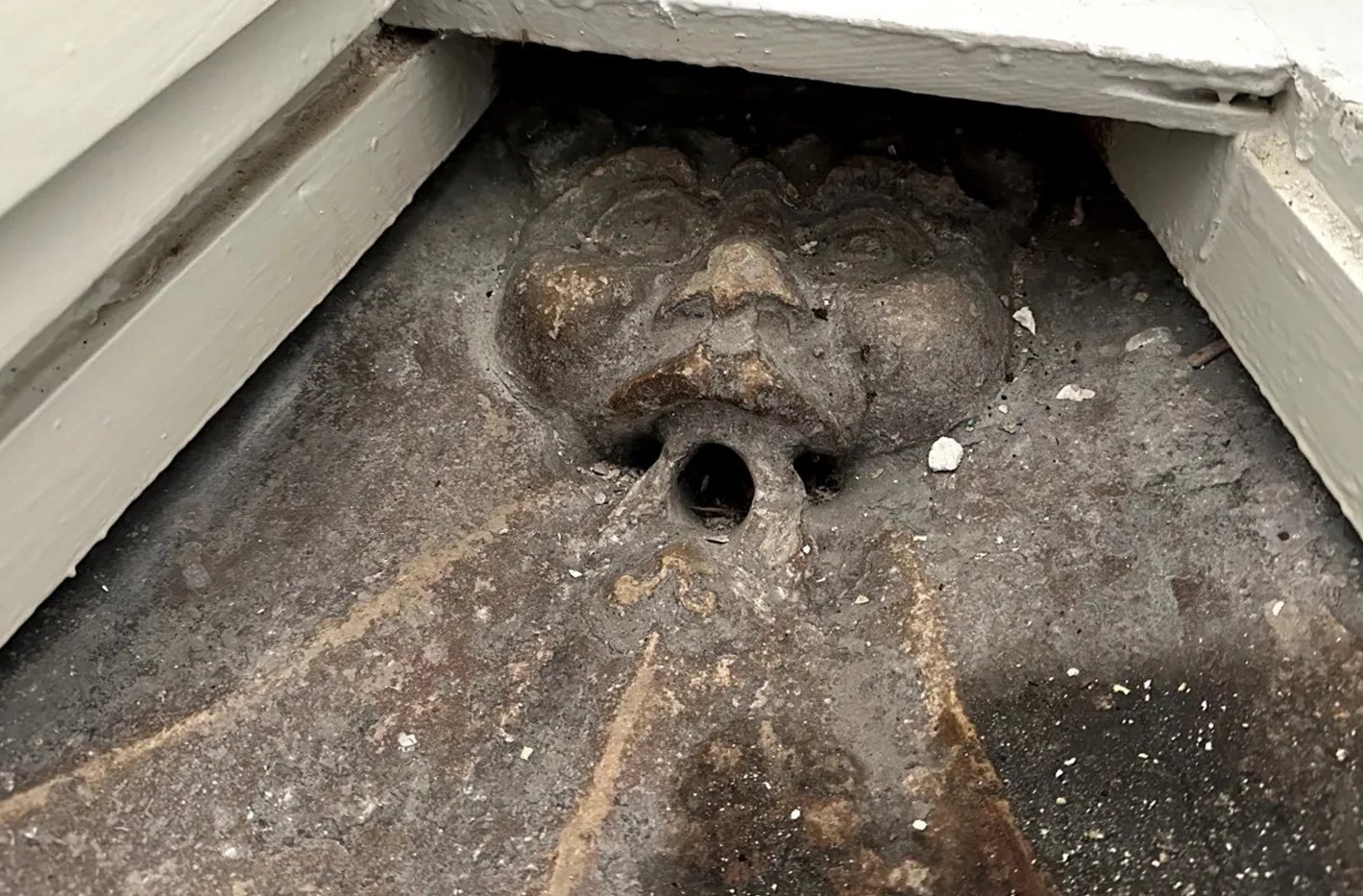A couple living in Lincoln, England, have discovered a trapdoor in their bathroom revealing a medieval imp.
An imp is a European mythological being similar to a fairy or demon. The Old English noun “impa” meant a young shoot or scion of a plant or tree, but by the 16th century it came to mean a small demon serving as a familiar to a witch.
Lincoln is famous for the Lincoln Imp, a grotesque creature sent by Satan which is carved into the upper reaches of Lincoln Cathedral.
According to one legend, a pair of Imps went on a rampage in Lincoln Cathedral and were confronted by an angel who emerged from a book of hymns. One of the imps was turned to stone by the angel, while the second escaped, circling the cathedral to this day in search of his friend.
Tracy and Rory Vorster discovered a trapdoor in their bathroom which revealed a stone carved with a grotesque imp face.
The face bears a striking resemblance to the Lincoln Imp, which according to an expert from the Lincoln Civic Trust, is likely a medieval drain or early urinal from the late 14th century.
The discovery was made in Vicar’s Court, Minster Yard, which during the 13th century was the site of a building founded by the college of priests.
Part of the building was demolished during the English Civil War, however, sections of the building survive which are rental homes owned by Lincoln Cathedral.
Speaking to the Local Democracy Reporting Service, Mr Vorster said: The whole of the house has kind of a hollow walling, so we immediately thought there could be more. In fact, we’re almost certain now.
Header Image Credit : Local Democracy Reporting Service
Sources : BBC





